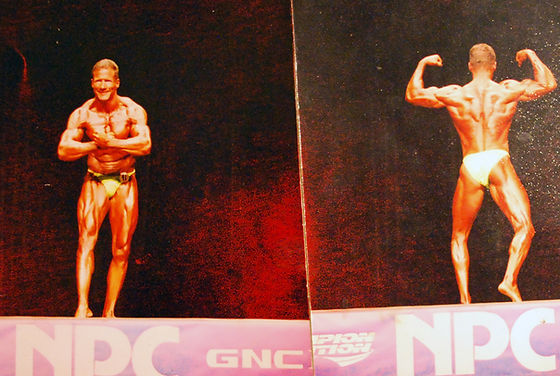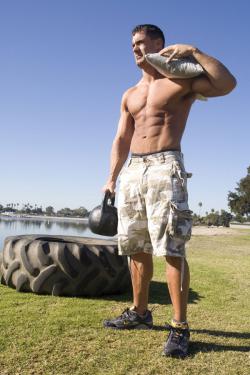
Personal trainers can take on a number different career paths within the military. On the Army's website, you can find information about the job outlook and the compensation. In fact, you might be able to land a position as an Army Drill Sergeant, a position that is the very definition of a personal trainer.
Career paths
Career paths for personal trainers in the military are numerous. While these positions are typically civil in nature, many military fitness facilities employ military personnel. The Army's website lists job opportunities in health and training, personal training, medical and dental services, and other areas. The Army drill sergeant is a master personal trainer.
Many military members are seeking career opportunities, and personal training may be the perfect choice. Personal trainers require discipline, perseverance, and skills. Most trainers find this career rewarding because they make a difference in their clients' lives.

Certifications
There are many types available for personal trainer certifications. Some personal trainer certifications are accredited by NCCA while others aren't. FitOps is an example of a non-profit that trains military personnel to be elite personal trainers. Their mission is to build a culture of fitness and health for veterans. Their program blends classroom instruction with hands-on practice in the gym. Upon completion of the program, they will receive a certificate recognizing them as a Veteran Fitness Operative.
Most certification programs can be used with military personnel. Before you enroll in a program, make sure to verify your GI benefits. Some organizations offer online certification programs for free that can be completed in a matter of hours. Online education is becoming more popular among military personnel.
Job outlook
Fitness is an excellent career choice, whether you are a spouse of a veteran or are just starting out in the civilian sector. LinkedIn reports that 6 million veterans can join the workforce. Yet, only 66 percent of them are employed. In addition, veterans are 15.6% more likely to be unemployed and underemployed than nonveterans. This is a sign that there are many job opportunities available for veterans who wish to make a career shift.
According to the US Bureau of Labor Statistics, there will be a 30% increase of job opportunities for operations researchers in the US Armed Forces in the next ten years. As service members retire, new positions will be created. To assist veterans in their transition, military-friendly employers may offer job training and job placement assistance.

Compensation
Military personal trainers are in high demand. These professionals help military personnel and active soldiers to lose weight and improve their lives. This is a growing demand as Americans are getting obese. The American Medical Association recently declared obesity a disease. This position is available to returning service members.
A fitness trainer has many benefits. First, it is an easily portable job. Fitness trainers can move to different locations without sacrificing their career. They can also teach group or individual exercise programs. They can empower military members and local communities alike.
FAQ
Do I need to get warm before going out?
Warming up before a sport can help reduce muscle soreness and increase performance. You can use several methods to warm up: walking, running, jumping rope, stretching, and cycling are just a few examples. Begin slowly, and then increase the intensity.
Exercise can I help me lose weight
Yes. Regular exercise will help you to lose weight by burning extra calories. You can also increase your metabolism, which means you will continue to burn calories even if you don't exercise.
Should I drink alcohol when I work out?
It is important to limit your alcohol intake while you are working out. A moderate amount of alcohol, one drink per day, may be beneficial for endurance during exercise. It can also help reduce fatigue and muscle pains caused by intense exercise.
How important is good nutrition?
We need to eat well for our health and wellbeing. Healthy diets include whole grains, fruits and vegetables as well as lean protein and dairy. Eating nutritious foods helps us stay fit and active, which leads to better overall health.
Do I need food before I exercise?
No. No. It is possible to snack on yogurt or fruit if you are hungry after your workout.
Statistics
- An estimated 110,000 deaths per year could be prevented (cdc.gov)
- Globally, 81% of adolescents aged 11-17 years were insufficiently physically active in 2016. (who.int)
- In high-income countries, 26% of men and 35% of women were insufficiently physically active, as compared to 12% of men and 24% of women in low-income countries. (who.int)
- Physical activity confers the following maternal and fetal health benefits: a decreased risk of pre-eclampsia, gestational hypertension, gestational diabetes (for example, 30% reduction in risk) (who.int)
External Links
How To
How to burn belly fat faster
Belly Fat is often thought of as a problem when trying to lose fat. If you look at it, belly fat is actually a positive thing. It is the fat in your stomach that protects your organs. Let's learn how to quickly burn belly fat.
Stress and inactivity are two of the major factors that cause us to store body fat. Cortisol hormone is stimulated by stress, which causes us to feel constantly hungry. Cortisol is responsible for an increase in insulin levels. The excess calories stored as fat are then stored by insulin. A lack of sleep leads to adrenaline being released into the system which causes an increased appetite. These extra calories can easily be lost through exercise.
There are many ways you can reduce belly fat. Depending on your budget, you can try each one. These tips will help you quickly get rid of belly fat.
-
Reduce the amount of food you eat. You should eat smaller meals throughout the day than you would if you ate three big meals. You will eat less calories in general.
-
Get plenty of water. Water flushes out toxins, and keeps your body hydrated. You won't overeat if you drink water before you eat.
-
Avoid unhealthy snacks. If you're looking for quick fixes, snack foods like chips, cookies, candies, etc. These tempting snacks might look appealing. But avoid these fattening treats as they contain lots of empty calories and too much sugar. Choose healthy options like whole grains, fruits, vegetables, nuts, seeds and nuts.
-
At least three times per semaine, do strength training. Strength training builds muscle mass and burns more calories when you're not working out. It strengthens bones and muscles, ligaments, muscles, tendons, heart, lungs, as well as joints.
-
Move regularly and stretch. Stretching can improve flexibility, mobility, and reduce back pain. Walking for 30 minutes is a great way to burn calories.
-
Reduce alcohol intake. Reduce alcohol intake. Alcohol is a waste of calories and has no nutritional value.
-
Reduce your weight gradually. To lose weight, the first step is to determine what your current weight. Then, add 5% to 10% to your body weight to get your ideal weight. Once you have reached your target weight, begin decreasing your daily calories intake by 500-1 000 calories until you reach your goal.
-
Avoid processed foods. These foods have high amounts of salt, sugar, and preservatives. Although they are convenient, processed foods don't have enough nutrients to sustain your health.
-
Don't skip breakfast! Breakfast improves concentration, memory, energy, and stamina. Breakfast should contain protein (like eggs), fibre (like oats), as well as complex carbohydrates (like oatmeal).
-
Have regular bowel movements. Constipation or irregularity can lead to gas and bloating. To prevent this, drink plenty of water and increase fiber intake.